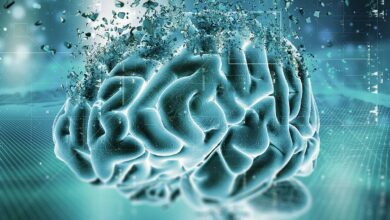Eating disorders are serious mental health conditions that affect millions of people around the world. Could using cannabis or CBD for eating disorders help?
People with these conditions often struggle to maintain a healthy body weight, or may suffer from an intense fear of weight gain. These disorders can have devastating effects on physical and emotional wellbeing, as well as relationships with friends and family members.
In this blog post Curakind looks at how CBD can be used to combat these symptoms while also improving mood and overall quality of life.
What are CBD and cannabis?
The word cannabis is used to refer to the plant Cannabis Sativa. This plant contains over 500 active ingredients called terpenes, flavonoids and cannabinoids.
CBD is one of the 113 cannabinoids of cannabis, alongside its notorious sister THC (delta9-tetrahydrocannabinol).
It is important to note, however, that unlike THC, CBD does not make you high.
The most common eating disorders:
Anorexia Nervosa
Anorexia nervosa, also called anorexia, is one of the gravest eating disorders and is characterised by extreme weight loss, or lack of appropriate weight gain in children. Ita is most common amongst teenage girls and women in general, though it can strike any age and sex.
People suffering from anorexia have an extreme fear of gaining weight and restrict their calorie intake and the types of food they eat. They may also have a distorted body image where they believe they are overweight, when they may be dangerously underweight and malnourished.
Some people blame media pressure and our obsession with social media for the issue, but there is evidence of anorexia going back thousands of years.
People with anorexia often have underlying issues such as:
- Intense fear of gaining weight
- Disturbed body image (body dysmorphia)
- Depression
- Social anxiety disorder (SAD)
- History of abuse
- Social isolation
Symptoms of anorexia may include: weight loss, poor appetite, lethargy, yellowish skin. Individuals experiencing the disorder may restrict their diet in unhealthy ways, such as abusing laxatives and exercising excessively.
Being thin is seen by people with anorexia to be directly correlated with self-worth.

Bulimia Nervosa
Bulimia Nervosa is an eating disorder that involves recurrent binge eating followed by compensatory behaviours, such as purging or fasting. People with bulimia nervosa tend to eat large amounts of food in a short time period (a few minutes to one hour), which often results in uncomfortable fullness and physical illness.
This overeating is then followed by purging: self induced vomiting, consumption of laxatives and diuretics, or excessive exercise to compensate for the excess calories consumed.
Although they are quite different, both disorders have similar traits—namely abnormal patterns of restrictive energy intake leading to unhealthy weight loss, as well as underlying anxiety disorders such as post traumatic stress disorder (PTSD) or generalized social anxiety disorder (GSAD).
Binge Eating Disorder (BED)
Binge Eating Disorder (BED) is a medical condition that causes people to lose control over their eating habits. A person with BED usually experiences short-term uncontrolled impulses for excessive food consumption several times a week.
BED typically occurs in people of normal weight, but can lead to the development of obesity. Consequently, those with BED often suffer feelings of distress and disgust associated with their binge eating impulses. Having these emotions only encourages them to continue using food as a coping mechanism for difficult mental conditions they may be experiencing, creating an unhealthy cycle that is hard to break free from.
Other kinds of disorders:
Obsessive Compulsive Disorder
Obsessive-compulsive disorder is a condition that causes recurring, unwanted thoughts and compulsions. The repetitive behaviours can significantly interfere with daily activities and social interactions.
For people without OCD, distressing thoughts or repetitive behaviours are disturbing, but do not typically disrupt their day-to-day lives. For those with OCD, however, these thoughts are persistent, and the behaviour is usually rigid. When a person with OCD does not complete an obsessive thought or compulsive action, it causes great distress. They might know that their obsessions are unrealistic, but this knowledge alone does not prevent them from struggling daily with their thoughts and compulsive behaviours.

Pica
Pica is an eating disorder in which a person eats substances not usually considered food. Young children often put non-food items (such as grass or toys) in their mouths because they are curious about the world around them. But children with pica go beyond that and eat substances that can lead to health problems.
Rumination disorder
Rumination is a rare condition in which people grind down and bring up food, usually from the stomach. Once the food is back in their mouth, it is chewed or spit out.
Rumination can occur after every meal and may appear effortless. The regurgitated food doesn’t usually taste sour or bitter because it hasn’t had time to mix with stomach acid or be digested since the food was last consumed.
This disorder causes no discomfort and people suffering this disorder do not normally appear stressed, upset or disgusted.
Avoidant/restrictive food intake disorder
Avoidant/restrictive food intake disorder is an eating disorder characterized by persistent failure to meet nutritional and energy needs.
A condition known as ARFID is often associated with a psychiatric comorbidity, such as anxiety and OCD. This condition affects both genders and is more common in children and young adolescents; it also can affect late adolescent adults.
Traditional and alternative treatments: how do they work to treat eating disorders?
Eating disorders are psychological conditions, and traditional treatments include therapy (including cognitive behavioral therapy) and antidepressants. However, these treatments do not affect the underlying issue or damaging habits sufficiently enough to address it.
These issues are mostly related to psychological problems; so, therapies such as psychotherapy and antidepressant medications are often prescribed to help with these mental health issues.
However, neither psychiatric remedies nor antidepressant medications have shown sufficient efficacy in addressing the underlying mental health issues or harmful eating habits.
Numerous studies have shown the therapeutic effects of CBD against different disorders like chronic pain, depression, and anxiety. But how can it help eating disorders?
Scientific research on cannabis and eating disorders
Mammals and humans share a cellular signaling system. The endocannabinoid system (ECS) consists of receptors and activators that send messages between cells in the body, using two different substances – cannabinoids and receptors.
There are two main groups of cannabinoid receptors – CB1 and CB2. CB1 receptors, which are mainly located in the brain, mostly influence coordination, mood, and emotions. The majority of CB2 receptors, primarily found in the immune system, affect inflammation and pain.
Evidence suggests the ECS regulates body weight and appetite; so it is no surprise to learn that people with eating disorders often have an endocannabinoid system that is not functioning correctly.
Benefits of using CBD and cannabis for anorexia, bulimia, and other eating disorders: cannabis

We all know the stereotype of somebody who smokes a lot of cannabis. They eat …..loads!!
There is a good scientific reason for this. There are many compounds in the cannabis plant that increase our hunger levels, and THC is among the most significant.
Unfortunately THC is also the cannabinoid that produces psychoactive effects. It is illegal in many countries and most cannabis products can only legally contain up to 0.3% THC.
If, however, you are in a country where cannabis is legal or decriminalized, this might be a good place to start. Cannabis generally comes in three different types: sativa, Indica and hybrid.
Sativa strains
Sativa cannabis is psychoactive. It’s good for being creative and active. It definitely doesn’t make you sleepy. It will stimulate the appetite but be aware that this “heady” high can also make you nervous and cause anxiety.
Indica Strains
Indica strains are at the other end of the spectrum. They give you more of a body high than a mental high and will make you sleepy. They are great for smoking or vaping before going to bed and are excellent for calming the mind. These are generally preferable for people suffering from anxiety.
Hybrid strains
As their name implies, these are a mix of both Sativa and Indica and as such each will have different properties. If you are going to go this route, it is a good idea to do some research beforehand, look up the effects (a website like Leafly can help you) and see what other people recommend.
Benefits of using CBD and cannabis for anorexia, bulimia, and other eating disorders: CBD
For those who live in countries where cannabis is prohibited, or simply do not want to risk a “high” CBD is still generally available and fortunately has many benefits for eating disorders:.

Improving mood
CBD oil has great mood-boosting benefits.
Anandamide is the body’s natural cannabinoid and is responsible for maintaining a happy mood. When your body is unable to create enough anandamide or cannot properly process the amount it creates, it causes a low.
CBD seems to raise anandamide levels when they begin to drop. Observere say it also enhances anandamide signaling, helping to manage mood disorders
Additional compounds found in a full-spectrum oil (terpenes: borneol, eucalyptol, limonene, and d-linalool) also provide additional mood-boosting effects.
Boosting appetite
People with eating disorders typically have a dysfunctional balance of hunger hormones, feeling satisfied even when their stomachs are empty.
Cannabinoids, particularly THC, flip the hunger switch in the brain’s hypothalamus, which stimulates food cravings – known as “the munchies”. It also promotes the formation of ghrelin, the hormone that makes us want to eat.
Relieving stress
CBD has been shown to lower anxiety levels in people with anorexia nervosa, which can be helpful for sufferers.
Side effects of using CBD and cannabis for anorexia, bulimia, or other eating disorder
Though rare, CBD can cause side effects such as:
- Dry mouth,
- Diarrhea
- Drowsiness
- Fatigue
CBD can cause interactions with other medications you are taking, such as blood thinners so it is important to check this with a doctor first.
Best cannabis and CBD for eating disorders: the difference between Full Spectrum, Broad Spectrum and CBD Isolate
Full Spectrum
When you buy a full spectrum CBD oil, you are buying much more than just CBD. This oil contains trace elements of all the 113 cannabinoids of cannabis: CBD, CBG, CBN and CBC to name just a few, as well as a small amount of THC, the psychoactive element found in marijuana.
All of these cannabinoids have their own individual therapeutic benefits. But when combined together, they compliment each other and work in harmony, in what is called the Entourage Effect.
This means that whilst CBD is effective, it works better when it’s combined with the other cannabinoids and terpenes. Just like an orchestra, where each instrument contributes to the whole of the symphony, the whole of the cannabis plant is greater and more powerful than the sum of its parts.
Full spectrum oil is a great option for eating disorders because it contains THC, which is an appetite stimulant. However it is important to note that THC can also provoke anxiety which may be a factor behind the disorder.
If you choose to try a full spectrum oil, start slowly, with a very low dose 3 times a day, and build up. If you experience anxiety, stop, and move over to a non THC-containing option, such as a broad spectrum product.
Broad Spectrum
Like full spectrum CBD, broad spectrum CBD products contain most of the compounds and cannabinoids from the cannabis plant, such as CBC and CBG; and terpenes, such as myrcene, limonene, or pinene. Crucially, though, a broad spectrum oil will typically contain little or no THC or CBN (the cannabinoid that THC degrades into). This means that whilst it is less likely to stimulate the appetite, it is better for those suffering from an anxiety disorder.
CBD Isolate
CBD Isolate, as the name suggests, contains just pure CBD and its efficacy depends very much on the type of eating disorder you are treating.
As well as helping improve mood, sleep and anxiety levels, pure CBD has been shown to inhibit appetite which is definitely not a good idea for somebody suffering from anorexia. For this you need a full spectrum product, containing all of the cannabinoids including THC. Or, if legally available where you live, a product containing higher THC levels that can provoke “the munchies”
However, for those who have an issue with binge eating, Isolate offers pure relief from food cravings which is obviously ideal.
Forms of CBD and cannabis available

CBD oils and tinctures
CBD oil is a combination of cannabidiol extract, and a carrier oil such as coconut oil (MCT oil), hemp seed oil or olive oil. It also includes other components like terpenes and flavonoids, as well as other minor cannabinoids.Essential oils may be added to improve the flavour of the mixture.
CBD tinctures are alcohol-based CBD extracts. This product is made using high-proof alcohol as a solvent.
Flowers and buds
A range of factors influence the efficacy of CBD including how it enters your system and the amount you take.
When you vape or inhale smoke, cannabinoids enter your bloodstream through blood vessels inside the lungs. This is a super quick method and most people get almost instant relief, feeling the effects within just 2 minutes. The downside is that the effects don’t last so long, and within half an hour to an hour they will have worn off.
Edibles
CBD edibles include candy, brownies, and cookies among many others. They are easy to make at home, just mix cannabidiol oil into foods like chocolate or smoothies.
Obviously by their nature CBD edibles are a complicated choice for somebody with an eating disorder. They also deliver their CBd more slowly than other methods as it has to pass through the digestive system in order to be absorbed. If you are looking to take CBD orally you are probably better off with either an oil or capsules or pills.
Pills and capsules
Like edibles, pills and capsules deliver their effects more slowly than other forms as they have to pass through the digestive system before they start working. This means they are less effective at relieving immediate cravings but have longer lasting benefits on mood and sleep quality compared to inhalation methods like vaping CBD flowers or extracts directly into your lungs.
Skin creams, lotions and massage oils
These are great for topical use, and can also have a helpful relaxing effect if used in massage, but as a main CBD source for an eating disorder, they are probably not the best option.
Dosage recommendations for those who suffer from anorexia, bulimia or other eating disorders
When you first try CBD treatment, it’s essential to start with a small dose and work your way up from there. It’s fine to start with 2mg or 4 mg and increase the dosage every couple of days until you feel relief.

Other treatments and lifestyle changes that may be helpful with eating disorders
Recovering from an eating disorder can take many months. Here are some things that should help:
1. Eat more high-fibre foods such as fruit, vegetables and whole grains. Your body digests these foods slowly so they will help keep you feeling full longer.
2. Eat at the table instead of in front of the TV or computer screen. Eating with others helps promote healthy eating habits by increasing awareness of proper portion sizes and food choices. Research shows it also reduces overeating.
3. Add some exercise to each day even if it is only a short walk or climb up the stairs. Exercise gets your heart pumping which delivers blood, nutrients and oxygen throughout the body.
4. Get enough sleep on a regular basis; studies show that lack of sleep can lead to hormone imbalances which can trigger cravings.
5. Ditch the diet soda, gum or candy to curb cravings for sweets. Choose water instead when a craving hits; it will help fill you up.
6. Make sure to eat breakfast, it sets the tone for the day and can help prevent overeating later in the day.
Conclusion
Eating disorders can be difficult to treat and it’s important that you find a doctor who is experienced with these illnesses. However, there are some promising options out there for people looking for help. Cannabis and CBD may not cure an eating disorder but they could provide relief from the symptoms of bulimia, anorexia or binge-eating disorder by reducing anxiety levels, calming mood swings and stimulating the appetite.
We hope this blog post has given you a better understanding of what CBD is and how it works when treating different types of eating disorders.
Why not give yourself the chance to feel better by trying something new?
MORE READING
Full spectrum CBD oil: what is it and is it worth trying?







